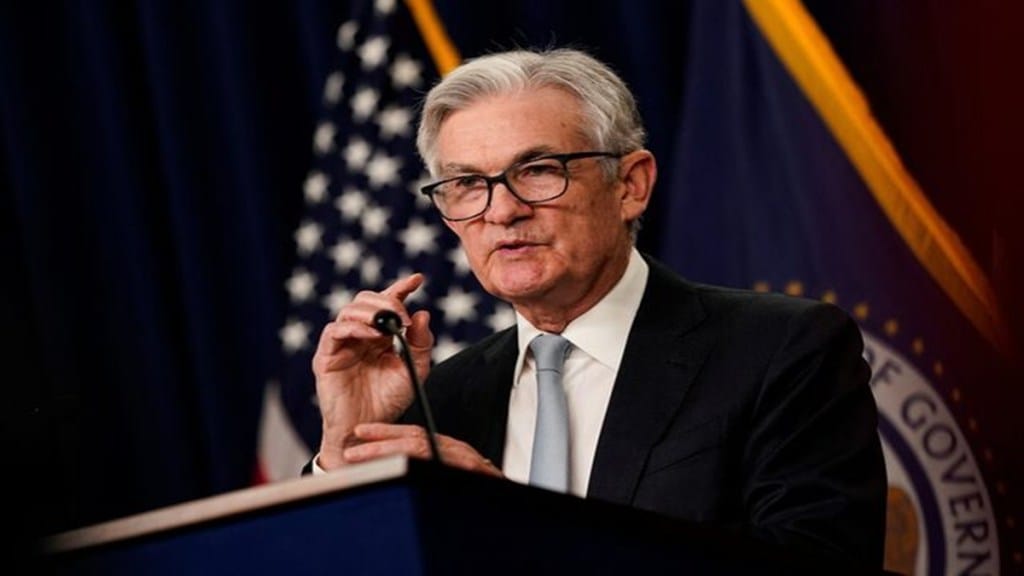The biggest takeaway from the US CPI report released on Wednesday is that tariffs have not yet had an impact on inflation. US CPI data for May showed a higher inflation rate than the previous month, but markets viewed it as a bullish sign as they were below expectations.
“Despite sticky inflation, tariffs have not yet shown up in consumer prices, but a lot depends on the absorption rate of U.S. companies and foreign suppliers. We believe that the majority of the tariffs will eventually get passed to the consumer, but companies are cautious at this juncture about passing along the price increase,” says Eric Teal, Chief Investment Officer for Comerica Wealth Management.
So, is it enough for the US Federal Reserve to start cutting rates after pausing in December?
When Will Powell Cut Rates
Wall Street is divided, as some believe a rate cut is coming in July, while others expect Powell to go for the rate cut as late as October. The CME Group’s FedWatch tool predicts a 57.1% chance that the Fed will cut interest rates by a quarter-point in September.
“The tariffs aren’t filtering through to Main Street as feared and the longer-term moderation in shelter costs continues. This is good news for the White House, Wall Street and Jerome Powell. The Fed’s tone could soften next week because we’ve probably seen peak hawkishness, especially with other central banks cutting. The door to a July rate cut is inching open again,” says David Russell, Global Head of Market Strategy at TradeStation.
Fed officials have delayed cutting the benchmark interest rate due to concerns about tariffs increasing consumer prices. Although there’s a low likelihood of a rate cut at next week’s meeting on June 17-18, the latest US CPI report could accelerate the cut timeline.
“The market continues to price in two Fed cuts in 2025, with this print barely moving the needle on rate cut pricing. The probability of a cut next week is literally zero, with the next cut expected in October,” says Madhavi Arora, Chief Economist, Emkay Global Financial Services.
Tariffs, as originally planned by Trump, have not been implemented in full in the economy. The 10% tariffs are prevalent on goods imported into the US, but the reciprocal tariffs were paused for 90 days.
How the US-China trade talks finalize will be crucial for the markets and the US Fed. On the trade front, US and Chinese negotiators reached a preliminary agreement during talks in London earlier this week, though it still requires formal approval from Presidents Trump and Xi. Meanwhile, Treasury Secretary Scott Bessent indicated the Trump administration may extend the 90-day pause on reciprocal tariffs for nations demonstrating “good faith” in trade negotiations.
Powell has been categorical that the Fed will cut rates only based on incoming data. US inflation has come in below expectations for the 4th consecutive month now, but Powell could still prefer to wait.
Fed’s Concern
The risk of inflation coming back because of tariffs is keeping Powell away from the rate cut. How long could we stand that pressure from Trump? Only time will tell. “We are still waiting. At least to this point, the upward price pressures on inflation from tariffs have yet to show up. We had some expectation that CPI data in May would reflect the impact of tariffs, yet both headline and core came in at .1%, less than expected and keeping year-over-year numbers restrained.
The Fed’s concerns that tariff-related price increases might spread to other areas of the economy are not evident in this release. In any event, fears of significantly higher inflation readings appear unfounded at present,” says Steve Wyett, Chief Investment Strategist from BOK Financial.
The FOMC meeting next week will release a summary of economic projections, including a Fed dot plot showing rate cut expectations for the year ahead.
Nigel Green, CEO of deVere Group says, “Markets want a story. Today’s CPI gave them a narrative of progress. But the Fed won’t cut on sentiment. It will wait for data, and that data remains mixed. The inflation fight isn’t over. The economy is showing cracks. Tariffs are complicating everything. The Fed won’t be rushed, but the markets will keep guessing. Our message: don’t guess. Get positioned correctly, now.”

